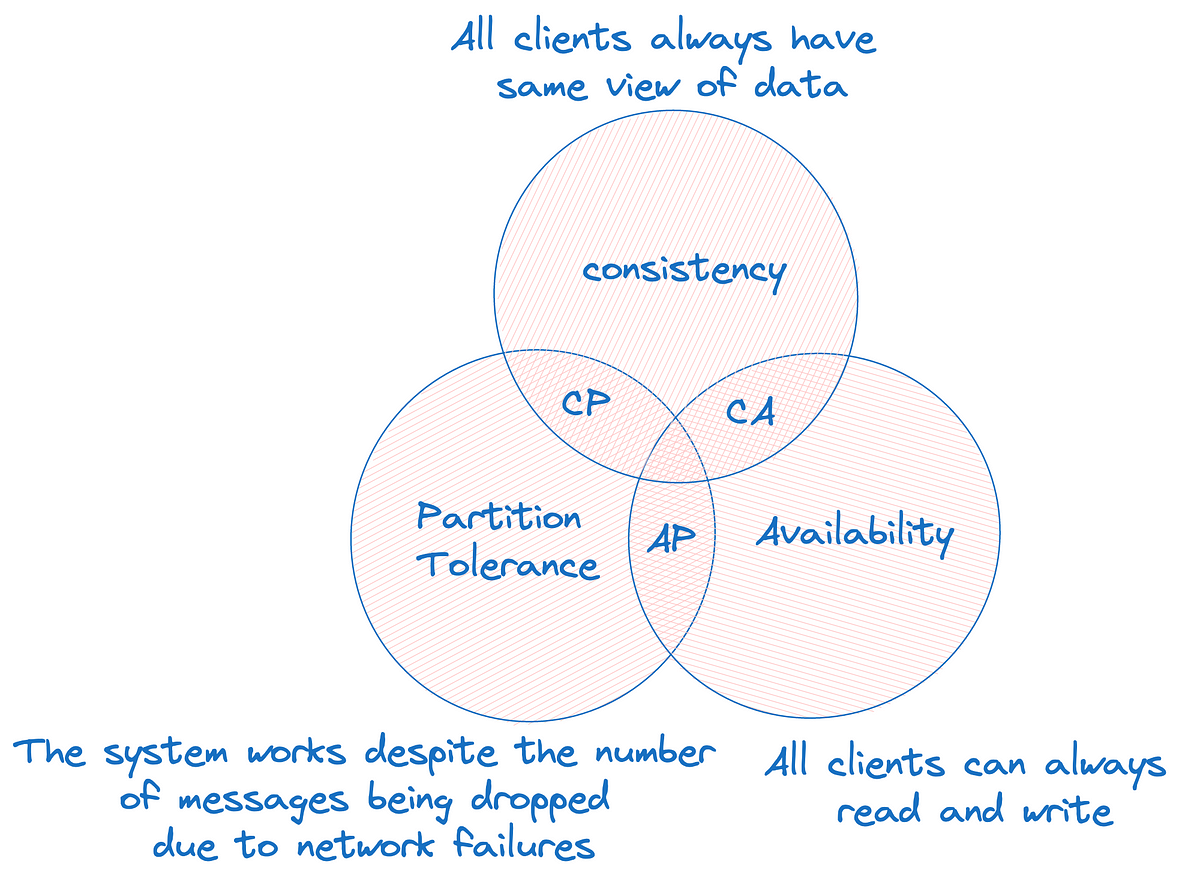During the 2000 Symposium on Principles of Distributed Computing, Eric Brewer delivered a keynote speech detailing the transformative shifts in distributed database development. Prior to his talk, the exponential growth in data volume necessitated more scalable solutions beyond traditional ACID-based databases. Consequently, novel principles emerged, encapsulated within the BASE paradigm, emphasizing basic availability, soft-state, and eventual consistency. Brewer scrutinized the repercussions of this paradigm shift, leading to the formulation of the CAP Theorem, initially posited as a personal hypothesis rather than an empirically proven statement. Despite its speculative nature, the theorem sparked widespread interest among researchers, culminating in its formal proof within two years.
Over time, the CAP Theorem has undergone continuous refinement, with Brewer himself revisiting the subject in a subsequent paper. He amended certain conclusions, acknowledging that while not erroneous, they might lead to potential misinterpretations. Notably, Brewer’s 2012 paper, “CAP twelve years later: How the ‘rules’ have changed,” highlighted these nuances. Nonetheless, the CAP Theorem remains one of the foundational discoveries in the realm of distributed databases, significantly influencing their design and operation.
The CAP theorem states that any networked shared-data system can have at most two of three desirable properties:
- consistency (C) equivalent to having a single up-to-date copy of the data
- high availability (A) of that data (for updates)
- tolerance to network partitions (P)
Opting to abandon Partition Tolerance lacks practicality within real-world scenarios due to the inevitability of network partitions. Consequently, the choice typically narrows down to prioritizing between Availability and Consistency, embodied respectively by ACID (Consistency) and BASE (Availability) principles. Yet, Brewer’s insight acknowledged that this decision isn’t a stark binary one. The spectrum between these extremes holds considerable value; blending varying degrees of Availability and Consistency often leads to more optimal outcomes.
In blockchain systems, such as Bitcoin, network partitions occur frequently since the nodes that form the system are globally distributed across many unreliable networks. Therefore, out of Consistency and Availability, blockchain systems select Availability reaching Consistency eventually. Why? If a blockchain system sacrifices availability, this means that the system pauses when transactions can’t be committed. So, if there’s a partition, a user can’t read or write data at all. In other words, if a blockchain system chose Consistency over Availability, it would mean that it’d become unavailable to users whenever it had to resolve an issue with consistency.
Hence, it can be asserted that blockchain systems align with AP (Available and Partition-tolerant) databases, resembling Dynamo. Dynamo, an entirely decentralized Key-value Store created by Amazon, prioritizes achieving robust availability. It integrates the fundamental “eventual consistency” principle from BASE, employing a decentralized replica synchronization protocol that upholds consistency during updates via a quorum-like method and object versioning. The system effectively detects failures through gossip protocols.
Blockchain systems attain consistency as transactions within a block receive additional confirmations. Put simply, the greater the number of subsequent blocks built atop a specific block, the stronger the assurance becomes that all nodes within the system hold an identical data state or share a consistent view of the distributed ledger. Consequently, the deeper a transaction is embedded in the chain, the lower the probability of any alterations occurring.
More recently, Vitalik Buterin applied CAP theorem to the blockchain, and coined the phrase “Blockchain Trilemma”. This describes a similar dilemma faced by blockchain system designers when juggling three conflicting requirements: decentralization, security, and scalability.
Blockchain networks inherently operate in a decentralized manner, devoid of singular control by any individual or entity. The level of decentralization in these networks varies across a spectrum. Security in a blockchain pertains to its resistance against malicious tampering attempts by bad actors. On the other hand, scalability denotes a blockchain’s capacity to handle elevated transactional volumes without experiencing a decline in performance as its adoption and usage intensify.
Thus, it may be the case that the Blockchain Trilemma is a better method to understand and design blockchain systems than the CAP theorem.
References
- Hellwig, D., Karlic, G. and Huchzermeier, A. (2020) Build your own blockchain. Springer International Publishing.
- Simon, S. (no date) ‘Brewer’s CAP Theorem’.
- Brewer, E. (2012, February). CAP twelve years later: How the “rules” have changed. Computer, vol. 45, no. 2 , pp. 23-29.
- Brewer, E. (2000). Towards Robust Distributed System. Symposium on Principles of Distributed Computing (PODC).
- DeCandia, G., & al. (2007). Dynamo: Amazon’s Higly Available Key-value Store. ACM Press New York, pp. 205-220.
- Gilbert, S., & Lynch, N. (2002, June). Brewers Conjunction and the Feasability of Consistent, Available, Partition-Tolerant Web Services. ACM SIGACT News , p. 33(2).
- Sregantan, N. (no date) What is the blockchain trilemma?: DBS Singapore, DBS. Available here.
